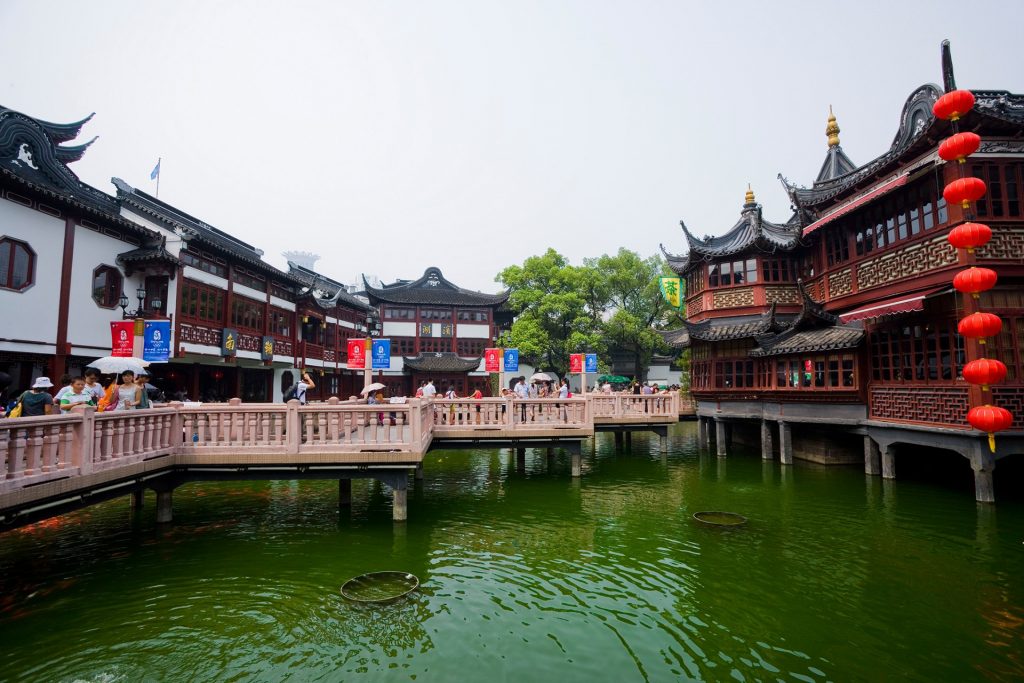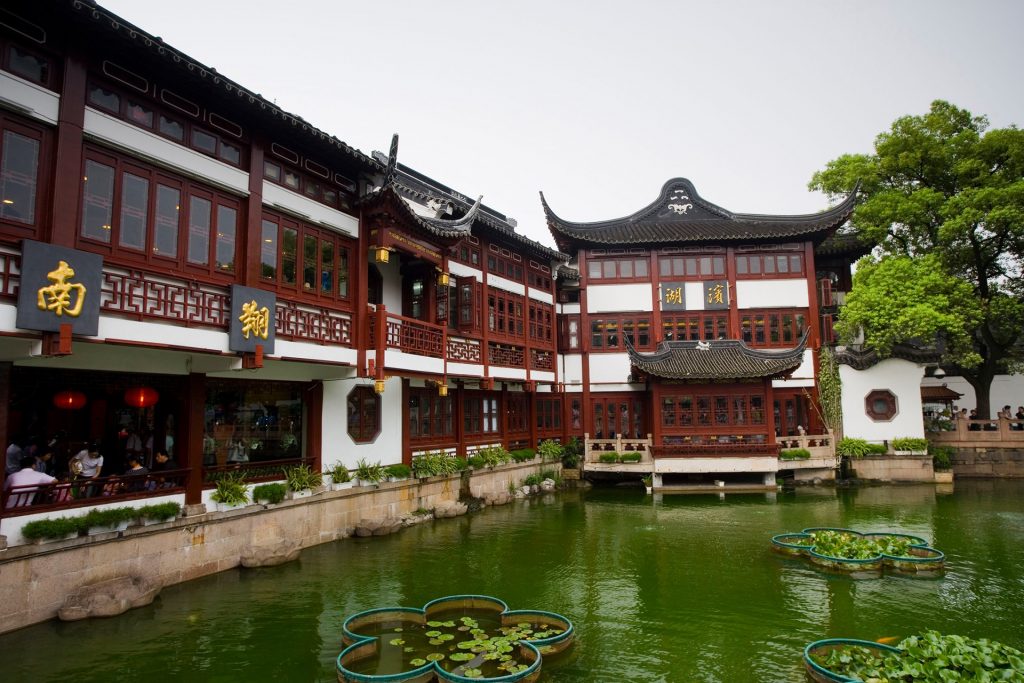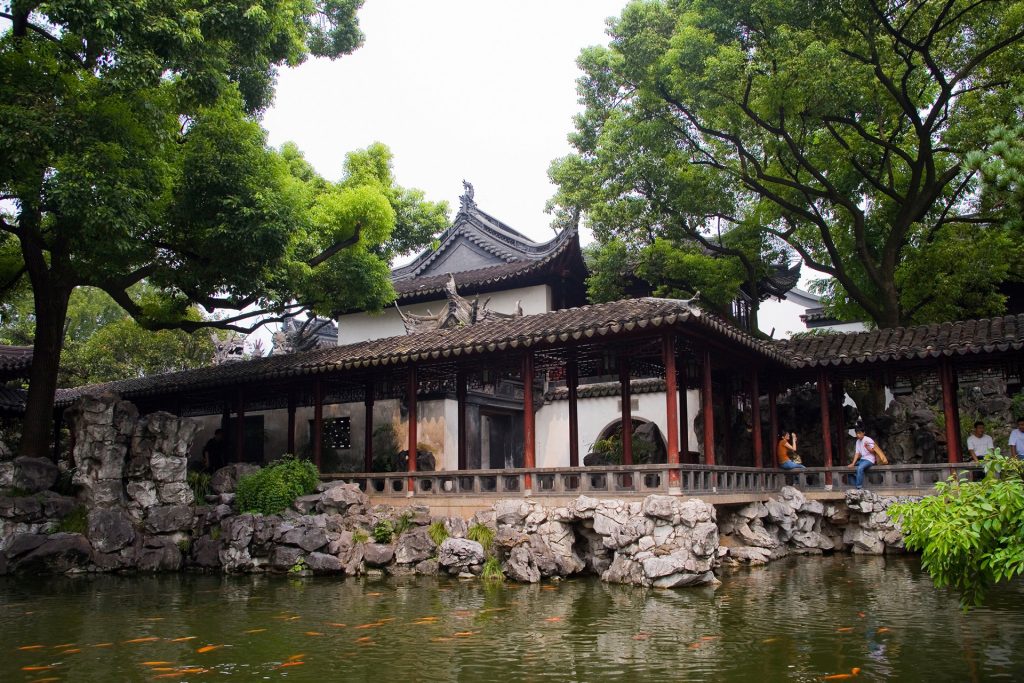Yuyuan Garden is the only fully restored classical Chinese garden in Shanghai. It was inaugurated in the Ming dynasty and has a total area of 20,000 square meters. Although the Garden occupies less than five acres, demonstrates perfectly the sophisticated art of combining several different elements to create a world in miniature – ingeniously mingling pavilions and corridors, small hills and carefully selected and well-placed rocks, lotus ponds, bridges, winding paths, and trees and shrubs.
As a paragon of the south Chinese landscaping style of the Ming and Qing dynasties, it is a MUST for all visitors to Shanghai. The neighboring Yuyuan Bazaar, known among old-timers as “Old City God’s Temple Market”, is a rising tourist and shopping center where visitors loitering among a cluster of shops, restaurants and recreation facilities invariably find themselves making a tour of discovery of local folklore and Ming and Qing architecture.
There are more than 40 scenic spots scattered throughout the garden, which is divided into six parts by five boundary walls. The six scenic areas include the Grand Rockery, the Ten Thousand-Flower Pavilion, the Hall of Heralding Spring, the Hall of Jade Magnificence, the Inner Garden, and the Lotus Pool.
History of Yuyuan Garden
Yu Garden was originally founded in 1559 during the Ming Dynasty by Pan Yunduan as a comfort for his father, the minister Pan En, in his old age. Pan Yunduan started the construction after failing one of the imperial exams. However, his appointment as governor of Sichuan Province delayed this project for nearly twenty years until 1577. In 1577, Pan Yunduan resigned and concentrated in building the garden. He hired some famous horticulturists to design the layout of the garden for him. The garden was the most well-known and the largest of its period in Shanghai City, but finally its cost helped the bankruptcy the Pans.
The garden was inherited by Zhang Zhaolin, Pan Yunduan’s granddaughter’s husband, and then passed to different owners. A group of merchants renovated the increasingly decrepit grounds in 1760 and in 1780 the West Garden was opened to the general public.
The gardens went through damage for a couple of times during the 19th century. In 1842 during the First Opium War, the British army used the Huxinting Teahouse as a base of operations for several days. During the Taiping Rebellion, the Small Swords Society ran its headquarters in the Dianchun Hall; by the time Qing troops recovered the garden, the original buildings in the garden were nearly all destroyed. They were damaged again by the Japanese in 1942. Then from 1956 to 1961, it was repaired by the Shanghai government. They were opened to the public in 1961.
Activities in Yuyuan Garden
【Flower Show】
There are flower shows every year, including chrysanthemum show, orchid show and plum flower show. All the flowers on the show are provided by private persons. Plum flower show is mostly held in Januarys, but not held every year. Orchid show is held every year, mostly in late April. Chrysanthemum show is also held in September every year.
【Lantern Show】
Lantern Show is held every in the New Year in the garden, from 1 January to 18 January of lunar calendar of China.
【Painting and Calligraphy Exhibition】
Occasionally, there are some painting and calligraphy exhibitions to show the Chinese culture to the visitors. If you have interested in that, you should make confirm with the management department of the garden to check out the date of the show. You can take Bus No.11, 66, 126, 926 can reach the place.
How to Get There & Tips
- By Bus:You can take Bus No.11、26、64、71、145、581、715、730、736、801、926、929、932、960 or 980, get off at Yuyuan Garden stop(豫园站).
- By Metro:take metro line 10, get off at the Yuyuan Garden Station.
- Arrive the garden one hour earlier than its actual closing time is advised, the ticket office stops selling ticket and the garden stops accepting any tourists 30-40 minutes before its actual shutting down time.



